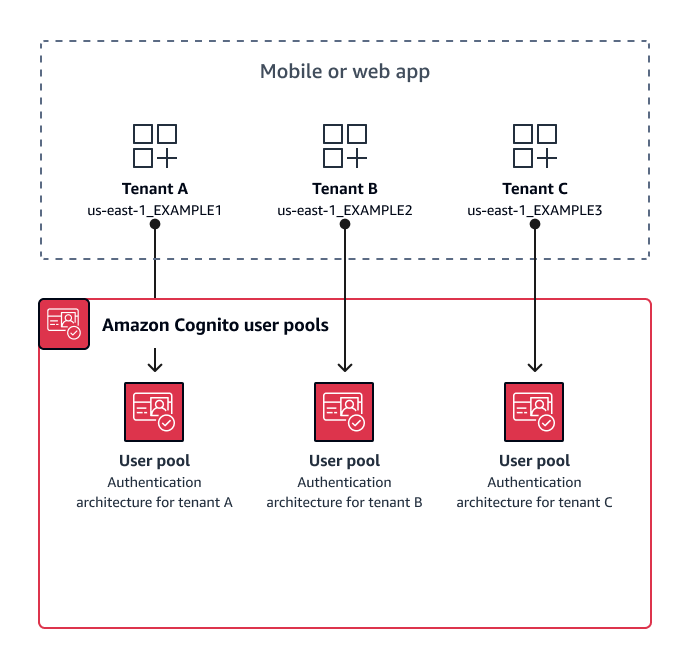User-pool multi-tenancy best practices
Create a user pool for each tenant in your app. This approach provides maximum isolation for each tenant. You can implement different configurations for each tenant. Tenant isolation by user pool gives you flexibility in user-to-tenant mapping. You can create multiple profiles for the same user. However, each user must sign up individually for each tenant they can access.
Using this approach, you can set up a hosted UI for each tenant independently and redirect users to their tenant-specific instance of your application. You can also use this approach to integrate with backend services like Amazon API Gateway.
The following diagram shows each tenant with a dedicated user pool.

When to implement user-pool multi-tenancy
When isolation and customization are your primary concerns. The relationship between users and tenants might be complex in an architecture with multiple user pools. Consider an example where you have two educational tenants. The same user might be a limited-access student in one app, and a teacher with a high level of permissions in another. You might require MFA in one app but not another, or have a different password policy. Because local users can sign in to multiple app clients in user pools with managed login, user-pool multi-tenancy is also ideal when you want more than one of your tenants to sign in with managed login.
Level of effort
The development and operation effort to use this approach is high. To ensure consistent and predictable outcomes for your family of apps, you must integrate Amazon Cognito resources with your automation tools and maintain your baselines as your authentication architecture grows more complex. When you want to create a single starting place for your apps, you have to build the user-interface (UI) elements to capture the initial decision that routes users to the correct resource.